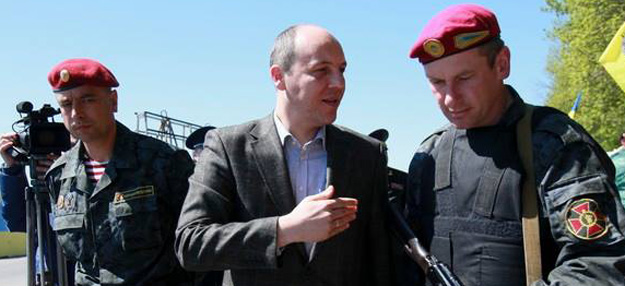A new book published by the Institute of National Memory aims to bust Soviet-era myths about World War II. A selection of 50 myths is also available online on their newly created site. Here we analyze the top-6 Soviet myths of World War II which are instrumental in the Kremlin's modern nation-building policies today.
Myth 1. For the USSR, World War II started on 22 June 1941. The proper name of the war is the "Great Patriotic War," because the USSR was defending itself against the Nazi invasion
In reality, the USSR started the war on 17 September 1939, when the Red Army crossed the border with Poland, occupying it in accordance with the union between the Third Reich and the Soviet Union, outlined by the Molotov-Ribbentrop pact. "German and Soviet troops walked hand in hand. This was called a 'military brotherhood' in the USSR before the war broke out," noted Oleksandr Zinchenko from the Institute of National Memory. After Hitler started the war in Europe, the USSR provided economic assistance to Nazi Germany. The USSR attempted to conceal these facts of collaboration with Hitler with the concept of the "Great Patriotic War," which started out as a mere ideological cliché pronounced by Joseph Stalin during a radio broadcast on 3 July 1941, after Nazi Germany invaded Soviet Ukraine.

Today, the concept of "Great Patriotic War" is being used by the Russian Federation as an alternative to World War II in attempts to maintain its influence on Ukraine and post-Soviet republics.
Myth 2. The USSR is an innocent victim of German aggression and was always an enemy of the Nazis
Reality: The USSR signed a non-aggression pact with Nazi Germany, the Molotov-Ribbentrop pact, that not only defined broad economic cooperation with the Third Reich and agreement on mutual non-aggression, but also contained a secret protocol by which the USSR and Germany agreed to divide up Europe.
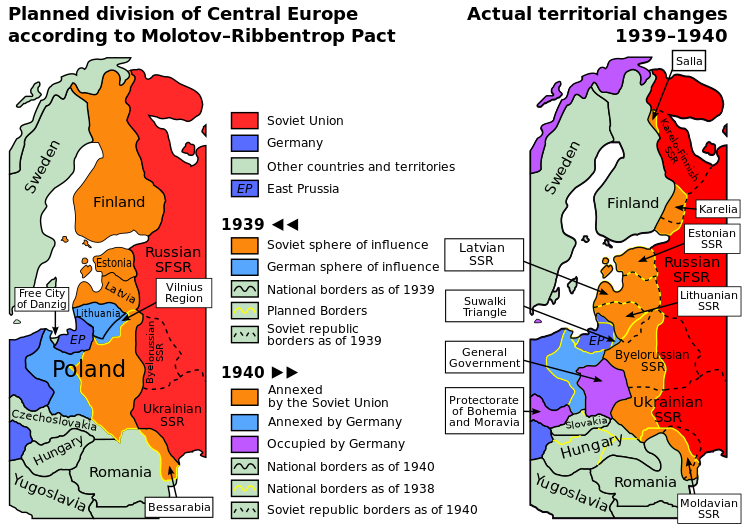
During Soviet times, and in Russia today, the existence of the Nazi–Soviet pact was explained as a necessity that came only after fruitless negotiations with Britain and France, and that the invasions of Poland were unconnected to the pact. In fact, Stalin willingly ruined attempts to establish an anti-Hitler coalition. During 12-21 August 1939, negotiations with Britain and France about collaborating to meet growing security challenges associated with the Third Reich took place in Moscow, but did not amount to an agreement because the Soviet leadership demanded the right to occupy Poland's regions Halychyna and Vilenska Oblast (today, western regions of Ukraine and Belarus), which the other side could not condone.
Both Stalin and Hitler were unsatisfied with the world order that came about after World War I, which made their collaboration natural. On 19 August 1939, Stalin spoke about the necessity to urge Europe into a great war, which would be an overture to a "world revolution;" on 23 August 1939, the Molotov-Ribbentrop pact was signed, outlining broad economic cooperation between the USSR and the Third Reich, and violating the sovereignty and territorial integrity of a range of independent countries.
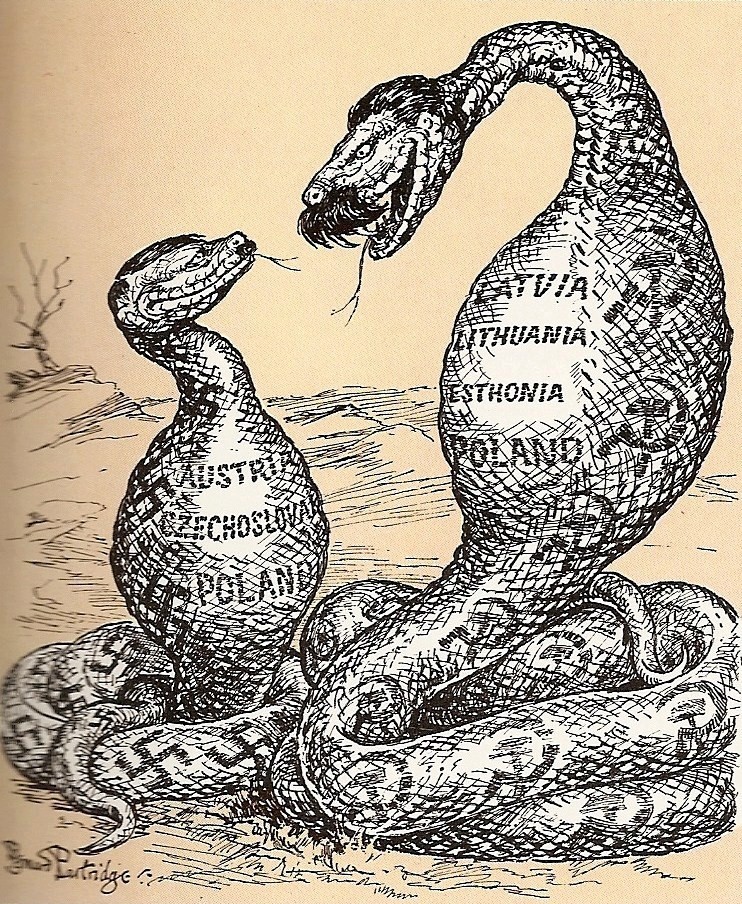
In addition to the stated clauses of the Molotov-Ribbentrop non-aggression pact, a secret protocol was adopted, dividing territories of Romania, Poland, Lithuania, Latvia, Estonia, and Finland into German and Soviet "spheres of influence", anticipating potential "territorial and political rearrangements" of these countries. The Kremlin denied the existence of the secret protocol to the Molotov-Ribbentrop pact up to 1992.
The Soviet-Nazi military collaboration is undeniably clear in photographs from the German–Soviet military parade in Brest-Litovsk on 22 September 1939 during the invasion of Poland.

, Bild 101I-121-0011A-23 / CC-BY-SA 3.0, CC BY-SA 3.0 de,
The pact had the most tragic consequences for European nations and the world; it is this agreement that became the mechanism opening the doors for a new world war. What followed was the invasion of Poland by Nazi Germany and the USSR, followed by the further carving up of Europe.
Myth 3. The Red Army did not commit war crimes
A popular myth during Soviet times was that the Red Army protected the USSR against fascists, saved millions of people from extermination, and brought freedom to oppressed European nations, committing no war crimes in the process. All evidence testifying to the opposite was dismissed as enemy propaganda and falsification.
In reality, facts of crimes of Soviet soldiers against civilians were massive. 4148 officers and a large number of ordinary soldiers were given sentences by the military tribunal in the first months of 1945 alone.
When the Red Army entered East Prussia in October of 1944, one of the soldiers wrote back to his parents in Smolensk: "Now we are allowed to do whatever we want to the German bastards." "Now our soldiers can see how their houses burn, how their families drag all their possessions with them, together with their viper offspring, - wrote another Soviet soldier. - They probably hope to stay alive, but they will have no mercy."
In a letter from the front, a Red Army captain wrote: "Our boys already 'tasted' all the German women. In general, there are many trophies." Another officer wrote: "of course, it's extremely brutal to kill children. But Germans deserve these barbarities."
Lieutenant Leonid Ryabychev recalled how Soviet troops in East Prussia overtook a convoy of German refugees. The soldiers threw the carts carrying possessions, pushed aside the elderly and children, and "pounced upon the women and girls in thousands."
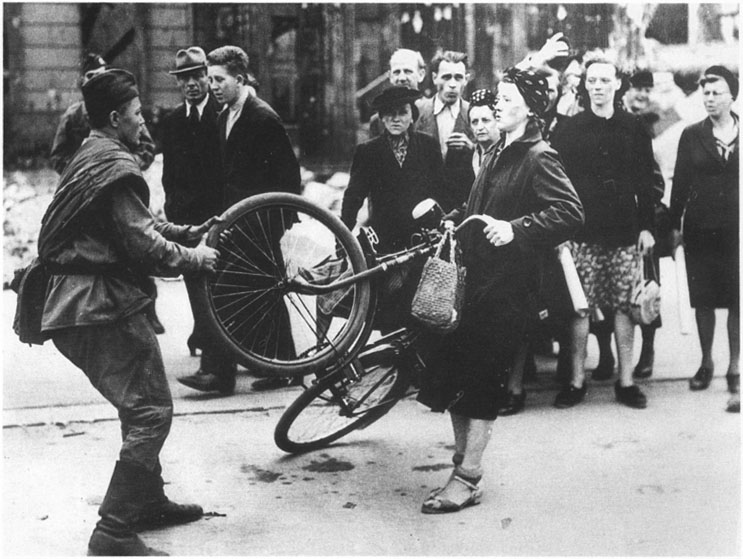
The extent of the robberies, looting, arson, violence against civilians and prisoners became widespread and was answered with special orders of the Soviet command fronts requiring to restore discipline in the army immediately. However, the measures taken weren't enough. In late March 1945, a memorandum to the Secretary of the Communist Party Malenkov records another case of mass rape of women by Soviet soldiers in the Grutenneng (Grüttenberg?) estate. These women were not even German. The document states that this estate was a temporary camp for liberated ostarbeiters! One of the official reports of the Main trophy control of the Red Army mentions thousands of pianos, hundreds of thousands of carpets, furniture, and clocks among the "spoils of war" brought back by the Red Army.
Myth 4. The USSR defeated Nazi Germany without the help of allies. The Russian forces could have won the war without the help of other nationalities of the Soviet Union
Soviet textbooks described the role of Soviet allies in the war in a rather superficial manner. While they are blamed for allowing the occupation of the Czech republic and waited till the last moment to open up the Second front, little is said about US help as part of the lend-lease program. During the Cold War, this myth was particularly important, as it elevated the contribution of the Soviet Union and diminished the contributions of its allies who were now on the other side of the Iron Wall. Today, in line with the growing isolation of Russia from the West, this myth is once again accentuated, one recent example being the book of now-Minister of Culture of Russia Volodymyr Medynsky "War. Myths of the USSR. 1939-1945."
In reality, the lend-lease was one of the decisive factors in the victory of the Allied forces against the Axis. The USSR, and Russia as its successor, still has not repaid its debt for the lend-lease to the USA.
According to different estimates, western equipment added up to:
- 12-16% of the equipment of the Soviet armored troops;
- 10-15% of USSR's aviation
- 32.4% of its Navy.
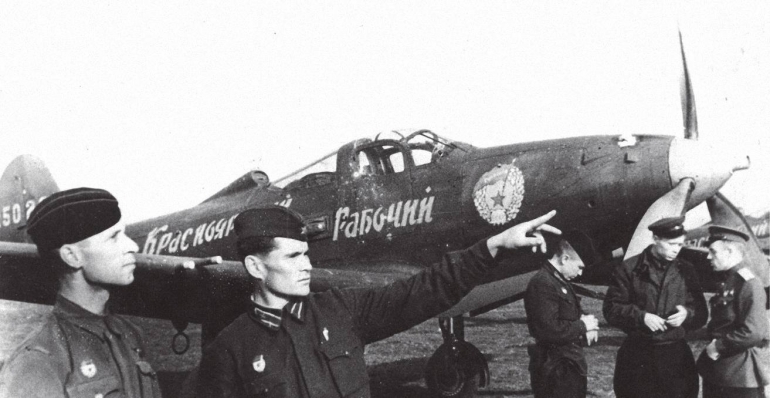
Up to 70% of the transport of the Soviet army came from the USA, meaning that the Soviet army drove around mainly on US cars. While the USSR released only 600 trucks for mounting "Katyusha" mortars, the USA contributed 20,000 Studebakers, making it the main vehicle for Soviet artillery. Apart from that, the lend-lease program gave the USSR 56% of its own production of railroad tracks and 43% of tires; 42% of its sugar, 108% of meat preserves, 18% of aviation fuel. The number of locomotives that the West provided exceeded the USSR's production by 2.4 times and the number of train cars - by 10.2 times. The amount of food that the USSR received as part of the lend-lease would have been enough to feed a 10-million army over 1688 days, i.e. the whole course of the war.


In the first months of the German invasion of the USSR, over half a million Soviet citizens died. "It is the extensive losses that allow Russian propagandists to pronounce the special role of the Soviet people in the victory over Nazism. In reality, 76 countries took part in the largest world conflict in all human history, involving over 1.5 billion people. Battles took place in North Africa. Around 60 million people died; every 5th Ukrainian and 6 Pole lost their lives in the war. We couldn't have won without the Ukrainians, nor the Americans, the British, the French, nor the Poles," notes Oleksandr Zinchenko.
Myth 5. Ukrainians are world champions in collaborating with the Nazis
Reality: Russians military collaboration with the Nazis was larger than that of Ukrainians. Researchers estimate that there were 250,000 people from the "Ukrainian formations" working in the structures of the Wehrmacht, SS, police and others; the amount of people from the "Russian formations" varies between 300 to 800,000, depending on the methodology. This difference is significant, considering that Ukraine was fully occupied by Germany, with its population exceeding the population of the 17% of Russia that was occupied, and that Ukraine was occupied for a longer time.
What were the factors underlying Russian and Ukrainian collaboration? Both Russia and Ukraine were suffering from Stalin's totalitarian regime and were hoping to overthrow Soviet power. Ukrainians had an additional motive behind their desire for USSR's defeat - they wanted to restore their state independence. This especially concerned residents of western Ukraine, who were part of the USSR for less than two years, and this short experience was not rosy.
The myth that Ukrainians especially collaborated with the Nazis was cultivated in the USSR not only to hide facts of Russian collaboration, but also to vilify the liberation movements that fought against Soviet rule and justify the fight of the Soviet NKVD against their remnants after the war ended. The chief target of the attacks is the Ukrainian Insurgent Army, or UPA, which following a short term of collaborating with Hitler in hopes of achieving an independent state turned against Germany. Both the Soviets and the Germans considered UPA's actions as an anti-German uprising.
More myths about the UPA can be found here: Ukraine’s Institute of National Memory addresses myths about UPA for the new Day of the Defender
Myth 6. Ukrainian nationalists extreminated Jews en masse during the war, especially in Lviv and Babyn Yar
This is another historical myth that Russian propaganda actively exploits today with the purpose of justifying the struggle that the Soviet secret police led against the Organization of Ukrainian Nationalists and UPA up till the end of the 1950s. In modern Russian media, one can often read about "mass extermination of Jews by Bandera [OUN leader] followers," which aims to create the following logical chain: Ukrainians who want an independent state are nationalists, Ukrainian nationalists killed Jews in WWII, consequently all those that want an independent Ukrainian state are secretly antisemitic and criminals.
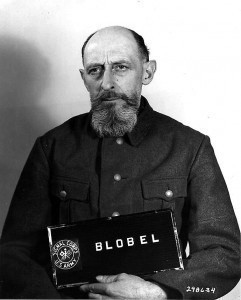
In reality, it was the Nazis that carried out a mass systematic extermination of the Jews on the territory of Ukraine. For this, they created special structures - Einsatzgruppen, Sonderkommandos. To enhance these departments, the so-called auxiliary police, employed in mass exterminations of the Holocaust, was used. They were formed from the local population, Soviet prisoners of war, former employees of the Soviet police. It is possible that OUN members were among them too. Their ethnic composition included not only Ukrainians but also Russians and other nationalities. The local population took part in the Jewish pogroms too, but they were not only Ukrainian by nationality. Most of them were not OUN members or other nationalist organizations; neither did they necessarily adhere to nationalist views.
For instance, the HQ of the German Einsatzgruppe arrived to Lviv on 1 July 1941, the second day after the German army occupied the city. At this time the Jewish pogrom took place. A common myth is that the alleged main organizers and executors of the massacre were members of the OUN and the soldiers of the "Nachtigall" battalion.
In fact, the leadership of the OUN (b) in its April 1941 regulations of the Second II Great Assembly indicated that its main aim is to obtain a Ukrainian state, and the organization of pogroms are attempts of external forces to distract the "Ukrainian masses" from that goal, using their anti-Jewish sentiments.
Nachtigall as a military unit as well did not take part in either organizing or carrying out the massacre. One of the soldiers later recalled the battalion commander Roman Shukhevych ordered not to engage in violence against the civilian population. In addition, the involvement of Nachtigall in the pogrom was not confirmed at the hearing of the case Theodor Oberlander in West Germany after end of the war. Moreover, recently declassified KGB documents showed that the accusations against the soldiers of this battalion were part of the Soviet secret police operation of 1959-1960.
Of course, some of the soldiers of the battalion, as well as some Ukrainian nationalists, could have participated in the pogrom with their own motives. However, its main instigators and organizers of the pogrom were Germans, who managed to direct anti-Soviet sentiments of the local population into the channel of antisemitism.
Unfortunately, the local population did take part in pogroms and other antisemitic actions on the territory of Ukraine. But they were not only Ukrainians, but also Russians, Poles, and representatives of other nationalities. Among them could have been members of Ukrainian nationalist organizations or persons with nationalist views. But references about the absence of wide support for Jewish pogroms among the local population are easily found even in the German documents of the period of World War II.
Further reading:
- Memory of the Great Patriotic war in Russia’s expansionist policy
- Occupation of Crimea repeats Latvia’s occupation by USSR
- The “Great Patriotic War” as a weapon in the war against Ukraine
- Russian media operates by law of war, tapping into Great Patriotic War myth
- Soviet myths about World War II and their role in contemporary Russian propaganda





